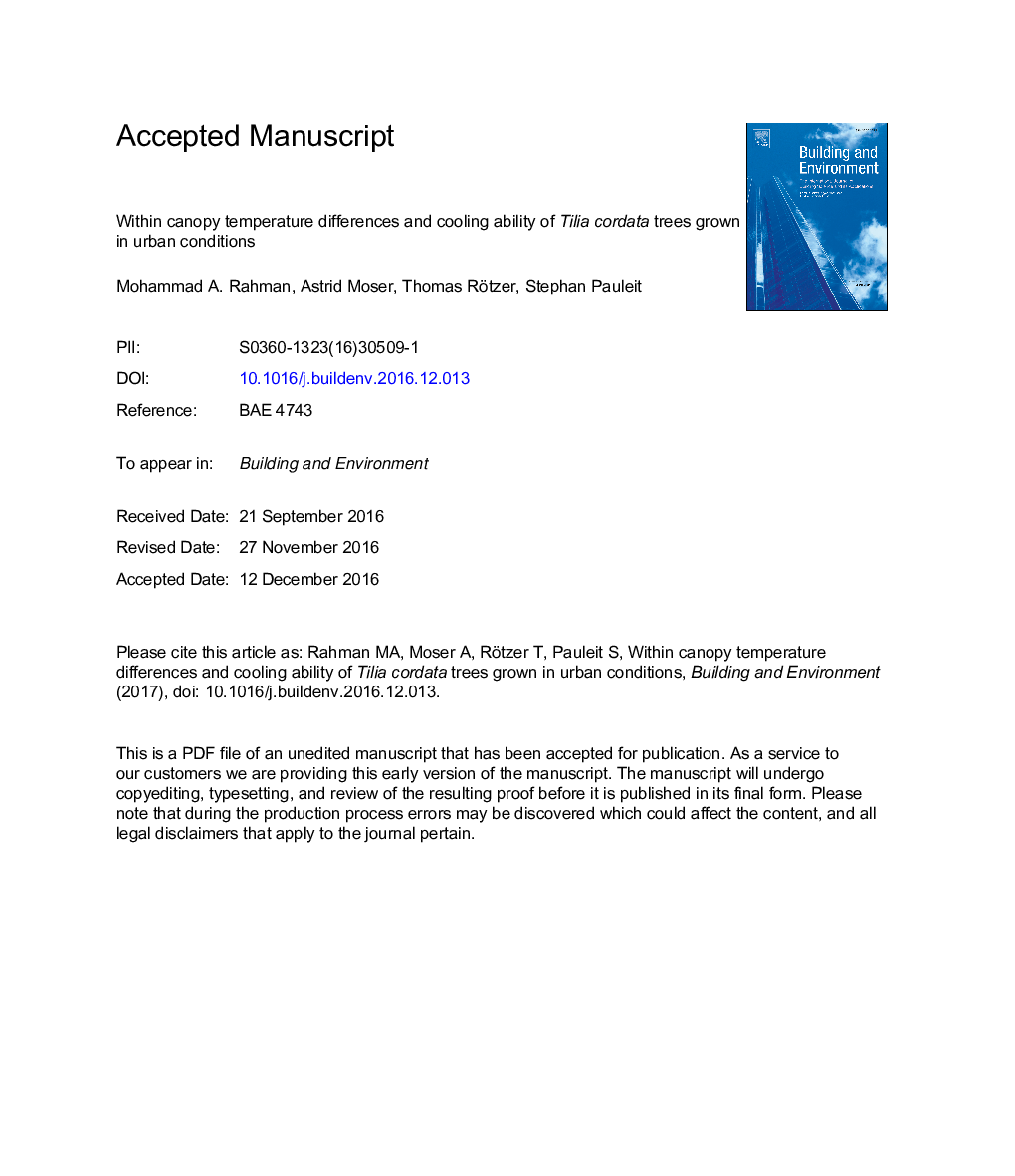| Article ID | Journal | Published Year | Pages | File Type |
|---|---|---|---|---|
| 4917414 | Building and Environment | 2017 | 35 Pages |
Abstract
Urban trees regulate their thermal environment mostly through the canopies. With multilayered complex canopies trees prevent solar radiation (reaching the ground) thus reduce the heat storage underneath. More importantly the intercepted energy rather increases the latent heat flux, hence reduces the air temperature during the daytime. However, there is little information on within canopy temperature of urban trees and inter-relationships between latent heat flux exchanges to identify thermal impact of vegetation. The present study continuously measured sapflow and within the canopy air temperature of Tilia cordata trees along with meteorological variables at two different street canyons in Munich, Germany over the summer, 2015. Within the canopy radius of 4.5 m, daytime temperature reduced up to 3.5 °C with energy loss of 75 W mâ2 during warm and dry August when the soil moisture potential was below 1.5 MPa and vapour pressure deficit was 4 kPa, but the nighttime temperature went up to 0.5 °C. Deeper underneath the tree canopy, 1.5 m above the ground the average temperature fell by up to 0.85 °C on hot sunny days. The regression equation showed better agreement of this air temperature reduction with the sap flow of trees (R2 = 0.61) rather than the differences between shaded and unshaded, paved and grass surface temperatures. Although the research is at an early stage, the results showed the potential of using canopy air temperature differences as a tool to better understand the transpiration response to within and below canopy temperature and also to be used in climate models.
Related Topics
Physical Sciences and Engineering
Energy
Renewable Energy, Sustainability and the Environment
Authors
Mohammad A. Rahman, Astrid Moser, Thomas Rötzer, Stephan Pauleit,
